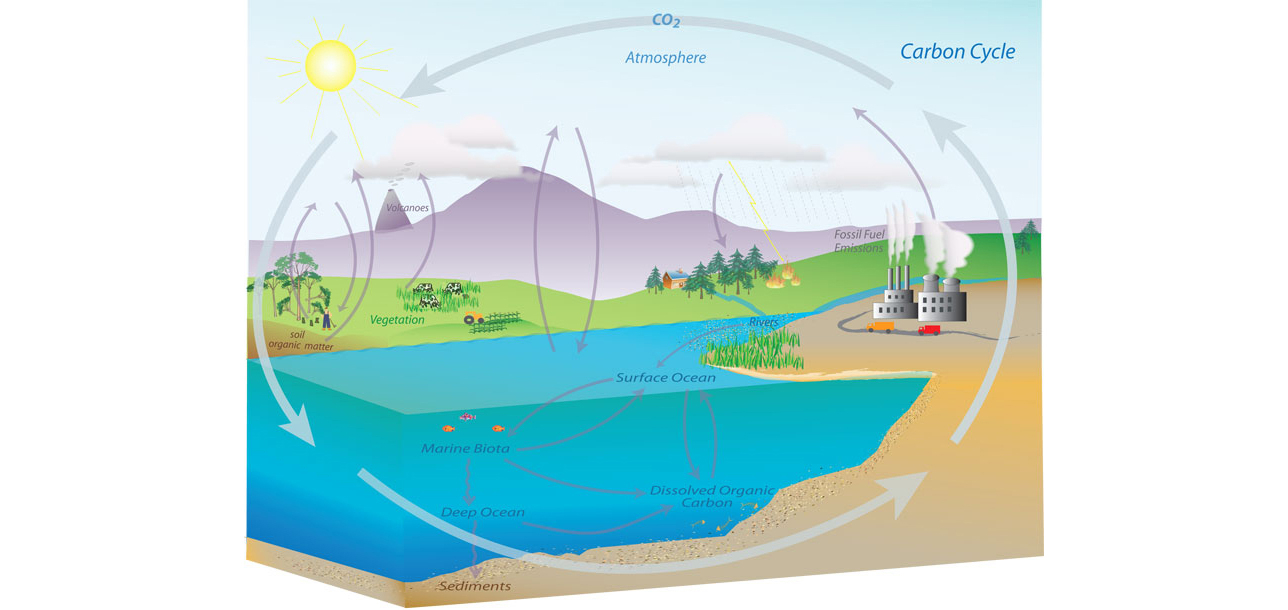Carbon is mentioned often in our daily lives. You hear the words - decarbonization, CO2 or carbon dioxide, carbon footprint, carbon emissions, carbon cycle, calcium carbonate, fossil carbon and much much more. The single most important word we hear repeatedly is ‘carbon.’
According to Britannica, carbon is a nonmetallic chemical element of the periodic table. It is not particularly plentiful—it makes up only about 0.025 percent of Earth’s crust, and yet when it is combined with other elements, their utilization multiplies as well as their outsized impact.
Here is another definition of carbon from the National Ocean Service, “Carbon is the foundation of all life on Earth, required to form complex molecules like proteins and DNA. This element is also found in our atmosphere in the form of carbon dioxide (CO2). Carbon helps to regulate the Earth’s temperature, makes all life possible, is a key ingredient in the food that sustains us, and provides a major source of the energy to fuel our global economy.”
NOAA describes the carbon cycle as an exchange and storage of life on earth.

NOAA’s Carbon Program defines carbon as “an integral part of the Earth system and the building block of life. Its presence in the atmosphere as carbon dioxide (CO2) and methane (CH4) is critical to maintaining a habitable climate. It plays a major role in the chemistry, physics, and biology of the oceans. Carbon is currently also the dominant element in human energy use, forming the basis of coal, oil, and natural gas – hydrocarbon compounds derived from plants that removed CO2 from the atmosphere hundreds of millions of years ago. The continual transport and transformation of carbon in the Earth’s atmosphere, rivers and oceans, soils, rocks, living organisms, and human systems is what we call the global carbon cycle.”
Carbon and Climate tries to explain how the Global Carbon Cycle and Climate Change/Global Warming are connected:
The Earth is warmed by the Sun. This warmth is returned from Earth to the atmosphere in the form of heat radiation. Many gases in the atmosphere, including CO2, absorb the Earth’s heat energy and radiate in all directions. The energy radiated downward warms the surface and lower atmosphere. Adding more CO2 to the atmosphere means more heat radiation is captured by the atmosphere and radiated back to Earth. Methane, CH4, is another very important greenhouse gas that is part of the carbon cycle. Humans add CO2 to the Atmosphere, Nature removes about half of it.
How does carbon become harmful?
Carbon becomes harmful when that exchange and storage cycle is disrupted.
To put it simply: humans add more carbon into the atmosphere than nature can remove, thus disrupting the exchange/storage cycle aka the carbon cycle.
How do we as humans feel the effects of all this excess carbon?
We feel it through the 23 year drought in California that has made intense wildfires a yearly event. We feel it through the increasing number of hurricanes and floods every year, up from 10-20 in a lifetime. And very specially, we feel the effects of excess carbon in the thousands of people dying of record high temperatures in areas that previously did not need an air conditioner.
The chart below is from Impactful Ninja, I like the simple cause-effect of the message.
|
Impact of a carbon footprint on the environment |
Why is that bad? |
|
Carbon emissions cause climate change |
The ever-increasing CO2 emissions trigger global warming, which leads to climate change with devastating weather events. |
|
Carbon emissions contribute to urban air pollution |
Toxic urban smog hanging over big cities causes an alarming number of respiratory infections and even cancer. |
|
Carbon emissions lead to toxic acid rain |
Acid rain in the presence of other chemicals in the atmosphere has a devastating effect on human health, fauna, and flora. |
|
Carbon emissions add to coastal and ocean acidification |
Acidic waters are the reason behind the extinction of many marine species. In combination with the rising temperatures, acid is bleaching coral reefs that offer protection and serve as home to many species of marine wildlife. |
|
Carbon emissions worsen the melting of glaciers and polar ice |
Fast-melting glaciers and polar ice incapacitate the Earth’s ability to reflect sunlight and have cascading effects on the Arctic food webs. |
For the next few blogs, I’m going to focus on the different areas of our lives that have contributed excessive carbon, more than nature or innovation can remove. When we better understand the ways we produce excess carbon, it’s easier to understand how we can limit our carbon emissions.
We are in this together.
Let’s go green.

